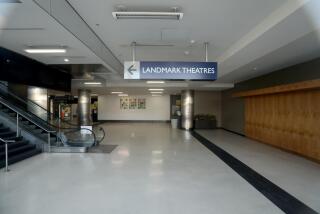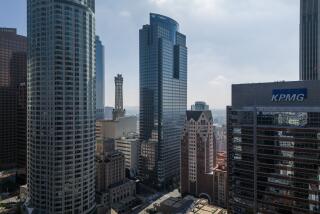GM Donates 5-Acre Plot to City
- Share via
A five-acre parcel of Panorama City land that was part of the old General Motors Corp. auto manufacturing plant was donated Monday to the city of Los Angeles, paving the way for a new police or fire station in the mid-Valley area.
The transfer from General Motors fulfills a long-standing promise that a public safety facility would be developed on land next to The Plant, a shopping center, and an industrial park built on the site of the old auto production facility, near the intersection of Van Nuys Boulevard and Arminta Street.
The deed stipulates that the parcel, valued at $2.8 million, is to be used for a police station, a fire station, a public park or a commercial park, said Deputy City Atty. Bruce Coplen of the Los Angeles city attorney’s office.
“As part of the development of the property, it was determined that it would be beneficial to have a fire station or police station in that area,” said Mark Barshop, an attorney representing GM.
Later this week, Los Angeles City Councilman Alex Padilla will introduce a motion directing the city’s fire and police departments to come up with proposals for how they would use the land, said David Gershwin, a spokesman for Padilla.
A representative of Mayor Richard Riordan’s office said it is likely that the Fire Department will get the land.
“The mayor thinks this is good for the city,” said Randy Steinberg, a member of Riordan’s Business Development Team. “We’re pretty sure it’s going to be a fire station,” he added.
It could also be used for both, said Robert Lumley, senior vice President for the Voit Cos., a partner in the venture that owns and has developed adjacent land. “Five acres is large enough for both police and fire stations on the site,” Lumley said. “There have been preliminary discussions for constructing both.”
Though the City Council approved acceptance of the donation of the land in 1997, the transfer could not take place until now because the city wanted more studies on whether building on the land was environmentally sound. Engineers who analyzed the site for a phase two environmental study bored holes into the ground and found the only pollutant there was finely ground asphalt, which will not pose health risks to future workers or occupants, Coplen said.
“We took extraordinary efforts to make sure the property was clean,” Coplen said. “We didn’t want a repeat of situations where the government acquires land that turns out to be contaminated, such as Belmont,” added Coplen, referring to the fiasco involving the construction of a $200-million school site that had to be halted because of environmental hazards.
More to Read
Sign up for Essential California
The most important California stories and recommendations in your inbox every morning.
You may occasionally receive promotional content from the Los Angeles Times.










